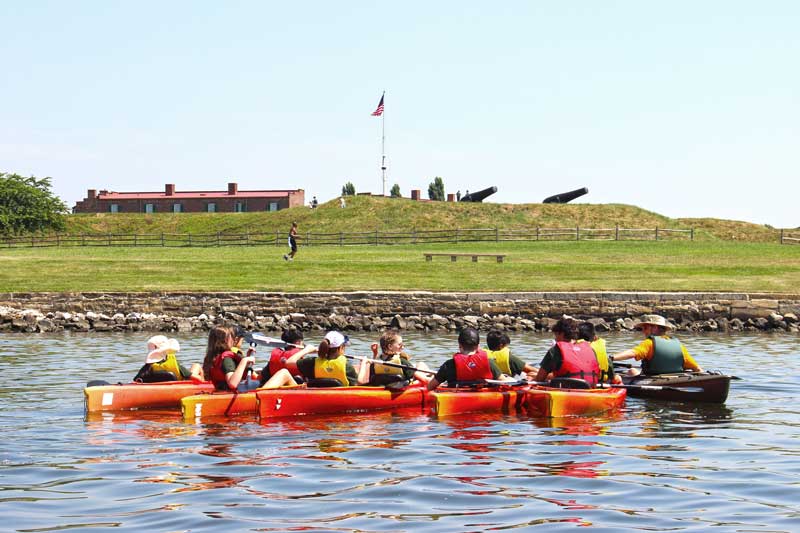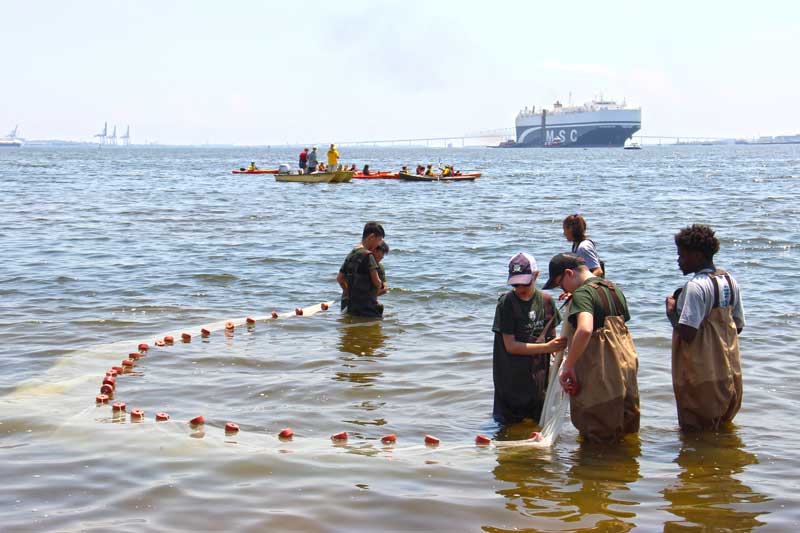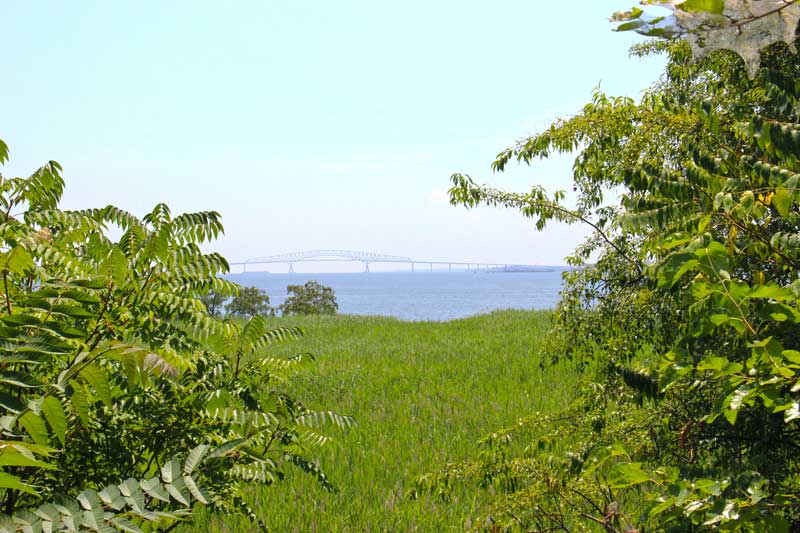The Fort McHenry Paddle Project in Baltimore, MD, currently in its third year, is a partnership between the National Park Service, Living Classrooms Foundation, the National Aquarium, and Ultimate Watersports.

This program is a collaborative effort to educate Baltimore City middle and high school students about paddling, the Chesapeake Bay, the history of Fort McHenry, and the wetland habitat around the fort. Living Classrooms Foundation is the managing partner of this project, which is funded through the National Park Service. When a proposal for the program was first developed, the idea was to provide a fun, recreational, and educational opportunity at Fort McHenry where students could learn as much about the natural history of the site as the cultural history.
We recently had the chance to participate in one of these paddle and wetlands tours, going through the program just as the students would.
The students who attend this program are split up into two groups: half head out onto the water in tandem kayaks, learning the basics of water safety and paddling, as well as some wetland education from Ultimate Watersports. The paddle tour ends just off the fort where the group is treated to the history of Fort McHenry from a National Park Service ranger. And while visitors can easily learn about Fort McHenry on a walking tour, very few get to hear the history from the water.

The other half of the group hikes along the shoreline and heads out to a beach with educators from the National Aquarium. On the walk they are given binoculars and learn about the plants and animals living in the area. Once they reach the shore, students don waders to go seining along the wetlands. Participants are able to pull in the seine net and learn about the fish they’ve caught, before safely releasing them back into the water. After lunch, the two groups switch.
The mission of the National Aquarium is to inspire conservation of the world's aquatic treasures, which is just as important to do in Baltimore City as it is in the world's most pristine seas. We recently connected with Laura Bankey, vice president of conservation programs, and Curtis Bennett, director of equity and community engagement at the National Aquarium, who shared that the Aquarium hopes to:
"Open students' eyes to the (natural) world that surrounds them and to connect them to that world in such a way that empowers them to want to take action to protect it. There is nothing like putting on a pair of waders and dragging a seine through the water and coming back to shore with a net full of fish or crabs; especially when we can do it in line-of-site of their neighborhoods."
For Bankey and Curtis, the biggest takeaway from the program has been the importance of:
"Creating opportunities for Baltimore City Youth to spend meaningful time in the outdoors and developing and/or strengthening their connection to nature and the environment overall in ways that are relevant, relatable, and most meaningful to them! (And) ensuring that they are ultimately empowered and have the agency to act and make a difference within the communities.

Blue Water Baltimore routinely monitors water quality at 49 stations in the rivers, streams, and harbor of the Patapsco River watershed. Bacteria content can fluctuate quickly, so you can view recent water quality readings through Blue Water Baltimore's interactive water quality map, Baltimore Water Watch. Right before our paddle, Blue Water Baltimore released the latest bacteria readings for the end of June, and while most test sites received a failing grade, Fort McHenry was one of the few with passable water quality, due largely to its extensive wetlands.
For the students to be able to not only hear that, but actually experience the waterways and diversity of life first-hand really emphasized the need for healthy wetland habitats on the Bay. Despite the heat, all in attendance left with a smile on their faces.
After the event, we caught up with Christine Truett, director of education at Living Classrooms Foundation. Living Classrooms Foundation is responsible for recruiting, scheduling, and communicating with the participating student groups, overseeing the daily programming, and providing coordination between the partners. Here's what she had to say regarding her experience over the past three years:
"For most of the students, the program provides totally new experiences and every student gets something different out of the program. Some love the kayaking. Some love the birdwatching and seining. Some love the history. But all of them enjoy seeing their city from a whole new perspective.
The Living Classrooms' motto is 'learning by doing.' The Fort McHenry Paddle Project (FMPP) is a great example of that. It really engages the kids and helps them to learn about their city's history and ecology by doing something fun and challenging. It's awesome to see the kids overcome apprehensions about the water, learn about the environment, and gain an appreciation for local history.
We ask every participant to complete a feedback survey at the end of every program. Last year, 100 percent of participants said they learned something about the Star Spangled Banner National Historic Trail, and would recommend the program to others."
This program is a great example of what can be accomplished when public and private interests collaborate. And while it is currently open only to students, a few paddle/wetlands tours open up to the public each summer, so keep an eye out on the partner's websites for more details.